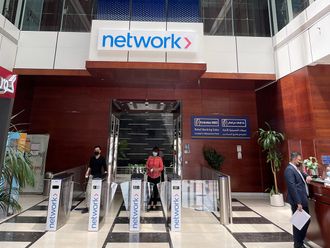Dubai: Saudi Arabia is targeting incremental non-hydrocarbon revenues of 152 billion riyals (Dh148.6 billion) — 5.2 per cent of GDP — and gross savings from energy and water price reform of 171 billion riyals (5.9 per cent of GDP), together these are expected to ease the fiscal crunch the country is facing following prolonged low oil prices.
The flagship measures the government relies on are the introduction of a 5 per cent value-added tax (VAT), excise and luxury taxes, as well as fees on expatriate dependents and levies on expatriate workers.
The introduction of excise taxes is likely to bring in annual revenues of 8-10 billion riyals (about 0.35 per cent of GDP), according to government estimates. VAT is budgeted to bring in $10 billion (1.4 per cent of GDP) in fiscal revenues.
The budget introduces a monthly fee of 100 riyals on expatriates sponsored by foreign employees for a total tax intake of 1 billion riyals from this year. Further corporate fees on the number of non-Saudi employees will be gradually introduced and increased over 2018-2020, with a target to raise 65 billion riyals (2.5 per cent of GDP) in 2020, up from 24 billion riyals (0.9 per cent of GDP) in 2018.
The Ministry of imposed selective taxes on tobacco and soft and energy drinks in the second quarter of 2017. A 2.5 per cent real estate white land tax kicked in late March. However, proceeds of the tax are however likely to accrue to the Ministry of Housing for real estate related projects.
Overhaul in utility pricing
Energy, electricity and water are targeted to be linked to international reference prices by 2020. The government has not yet officially decided on the reference prices to link domestic energy, water and electricity administered prices to, but appears to be mulling bringing energy product prices to their export price levels and electricity and water prices to cost recovery levels. However, the net proceeds of the reform are likely to be smaller as the government intends to partially compensate the household and private corporate sectors for the impact of these measures.
“The government expects the cumulative inflation impact of these measures to 4.8 percentage points to inflation, according to our reading of the Fiscal Balance Programme 2020. The government estimates gross savings of 27 billion riyals [1 per cent of GDP] from the first phase of energy reforms in 2016, climbing to 38 billion riyals [1.3 per cent of GDP] by 2020, partially reflecting higher oil prices, in our view,” said Jean-Michel Saliba, Meana Economist at Bank of America Merrill Lynch.
The government intends to compensate Saudi households on a means-tested basis. The Household Allowance will be based on sensible consumption of energy, electricity and water, and will incorporate compensation for the indirect impact of reforms (incremental inflation in basic goods).
Overall the government expects the household cash allowance programme to cost 20-25 billion riyals in 2017 (0.9 per cent of GDP), climbing to 60-70 billion riyals (2.3 per cent of GDP) by 2020, according to authorities.
Given likely subdued medium-term growth and a rising burden on the private sector, Saudi corporates could face a difficult operating environment.










